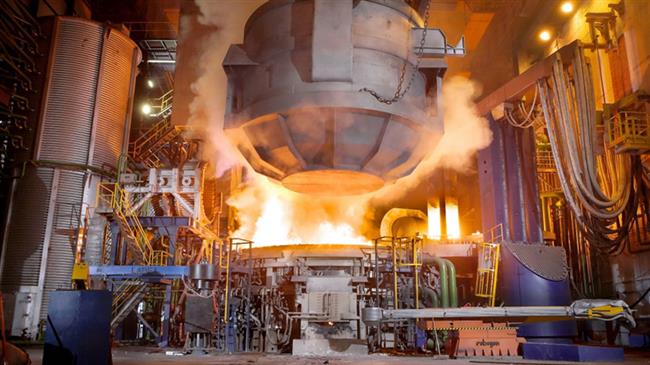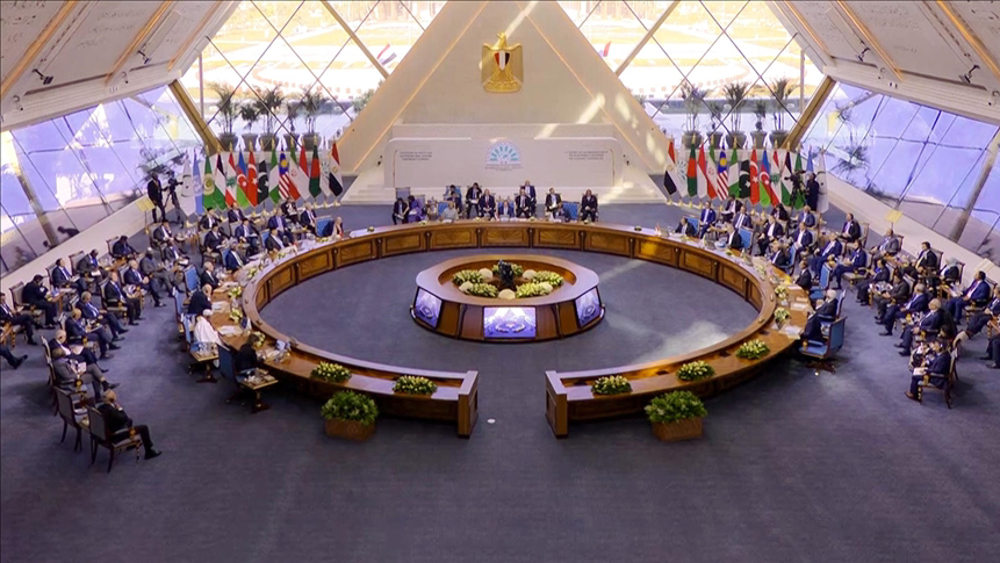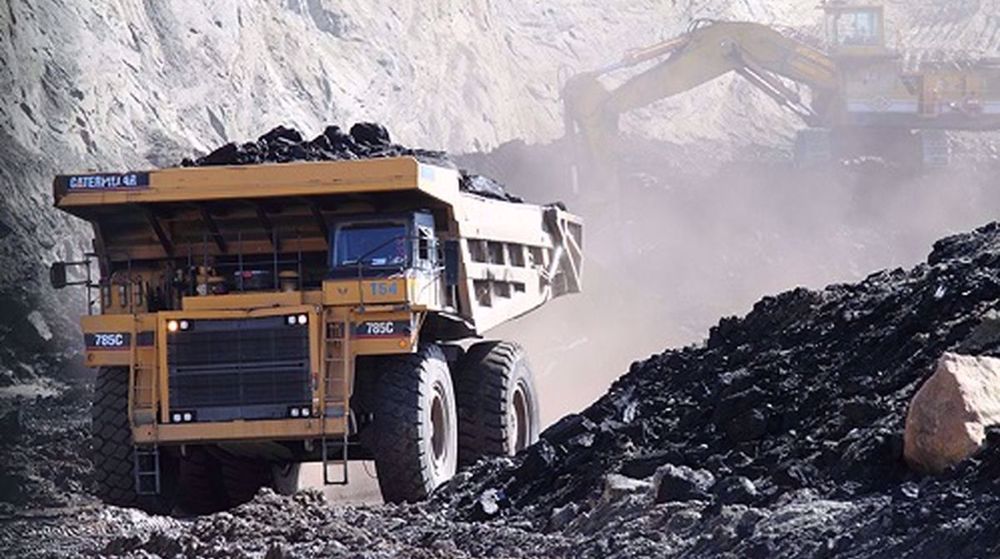Iran says steel industry growing after US turns up sanctions heat
Iran’s industrial metals, specifically steel, are the latest target in the Trump administration’s maximum pressure campaign, but officials say the sector is unfazed and keeps growing.
Earlier this month, the US government launched the latest salvo in the campaign as it warned against exports of steel-making materials to Iran.
The US Department of State cautioned that those involved in transfers or exports to Iran of graphite electrodes and needle coke, which are essential materials for Iran's steel industry, were at risk of sanctions regardless of their nationality or location.
Iran’s Minister of Industry, Mine and Trade Reza Rahmani put the damper on Washington’s haughty grandstanding, saying Iranian producers had obtained the technology to make graphite electrodes.
“In the steel field, we identified the production of graphite electrodes as a chokehold and produced it domestically,” Rahmani said last week.
Graphite electrodes are used to melt scrap in electric arc furnaces to produce new steel. Needle coke is used as a key material for graphite electrodes in an electric arc furnace.
Iran is a leading producer of steel in the world, with officials saying exports continue despite the US sanctions.
The country plans to raise steel output to 55 million tonnes a year by 2025, of which 20 to 25 million tonnes would be earmarked for export.
Deputy Minister of Industry, Mine and Trade Jafar Serqini said Wednesday Iran has currently 35 million tonnes of steel production capacity.
Steel exports will exceed 11 million tonnes this year, up 30 percent from 8.5 million tonnes last year, Tasnim news agency quoted him as saying. “This shows that Iran's steel industry is rapidly moving forward.”
According to Serqini, several steel units with an overall capacity of 10 million tonnes are currently being built with above 50 percent of physical progress, while another 10 million tonnes of capacity has been defined to be established.
“All these efforts are aimed at reaching the target of 55 million tonnes of steel in the 20-year vision plan,” he said.
For the past three to four years, steel production growth in Iran has always been higher than the global average, according to Serqini.
Steel output is expected to hit 28 million tonnes this year in March, when the current Persian year concludes, head of Iran’s largest holding in metals sector known as IMIDRO Khodadad Gharibpour has said.
It shows the sector – 10 percent of Iran’s export economy - is weathering the headwinds of the most intensive US sanctions which were unleashed in May when President Donald Trump targeted the Islamic Republic’s export revenues from its industrial metals.
At the time, Trump put world nations on notice against allowing Iranian steel and other metals into their ports, saying it would no longer be tolerated.
The US State Department imposed new sanctions on Iran’s biggest airline and its shipping network this month.
"US persons will be prohibited from engaging in transactions involving Islamic Republic of Iran Shipping Lines (IRISL) or E-Sail, including transactions for the sale of agricultural commodities, food, medicine, or medical devices,” the Treasury’s guidelines on Iran sanctions read.
"In addition, non-US persons that knowingly engage in certain transactions with IRISL or E-Sail, even for the sale to Iran of agricultural commodities, food, medicine, or medical devices, risk exposure to sanctions under additional authorities,” it added.
Brian Hook, the State Department’s Iran envoy, said in a statement the US was now turning to “all remaining sources of export revenue, including from petrochemicals and metals that are subject to US sanctions”.
According to US financial new provider Bloomberg, the measures marked the next phase of Trump’s bid to squeeze Iran’s economy.
The Trump administration claims it has already slashed Iran's oil exports to a trickle, but the Iranian economy is chugging along, much to the chagrin of American leaders who thought the country would come apart if squeezed very hard.
Iran’s steel industry is export-oriented, but it does not depend on foreign technology, with officials saying the zero to 100 of a steel mill can now be designed and built in the country.
Even before the US sanctions, Iran’s steel exports faced a hostile terrain in Europe where the bloc’s executive body, the European Commission, levied trade tariffs against Iranian products.
Still, there is a buoyant domestic market where more than 50 industries in Iran are linked to the construction industry which uses steel as a basic ingredient.
Steel is also the key component in Iran’s automotive industry which is the largest in the Middle East and North Africa. Iran further has a massive oil and gas industry and a sprawling transportation and water supply network.
On the export front, China holds the key to the growth of Iran’s metals industry. The Asian powerhouse is the world’s biggest steelmaker and consumer of iron ore.
“Should China ignore these sanctions, the impact would be almost nil. Iran is cooperating with China as part of the Belt and Road Initiative and this would further strengthen ties between the nations,” Tyler Broda, analyst at RBC Capital Markets, has told Financial Times.
Iran used to export 23 to 25 million tonnes of iron ore a year, but much of it is now directed to the value-added production chain in the country.
“Iron ore exports will not exceed 5 million tonnes this year and the rest will be converted into steel and then exported,” Serqini said on Wednesday.
American warplane downed after Yemeni attacks 'baffled' US air defense: Ansarullah
VIDEO | Yemenis praise the military for its successful operations against Israel
VIDEO | Israel continues to bomb Gaza homes
VIDEO | An insider's view of the country: Meybod City in Yazd
‘All wars have rules. All of those rules have been broken’ by Israel
VIDEO | Report flags India’s violation of rights of Rohingya detainees
Turkey's foreign minister meets Syria's de facto leader in Damascus
VIDEO | US Syria plots












 This makes it easy to access the Press TV website
This makes it easy to access the Press TV website